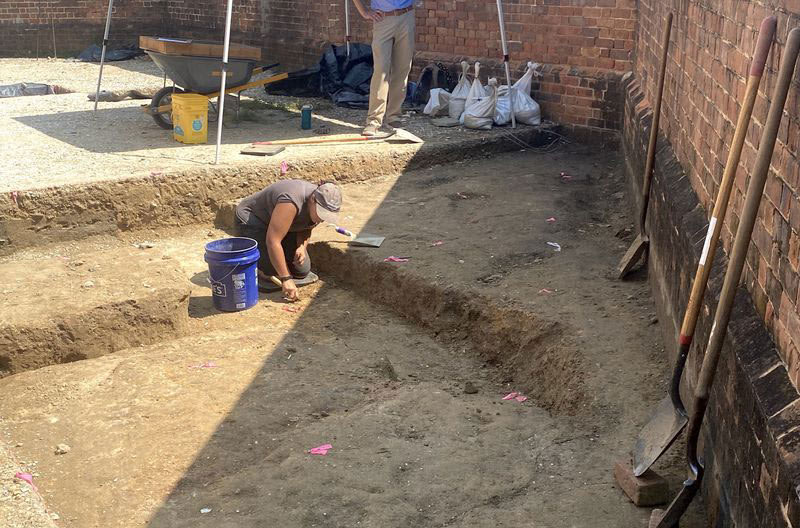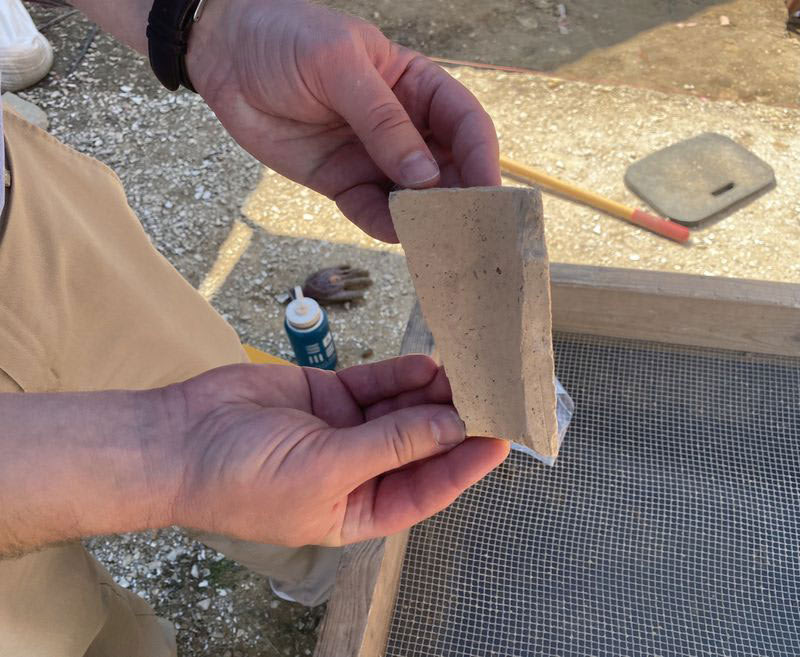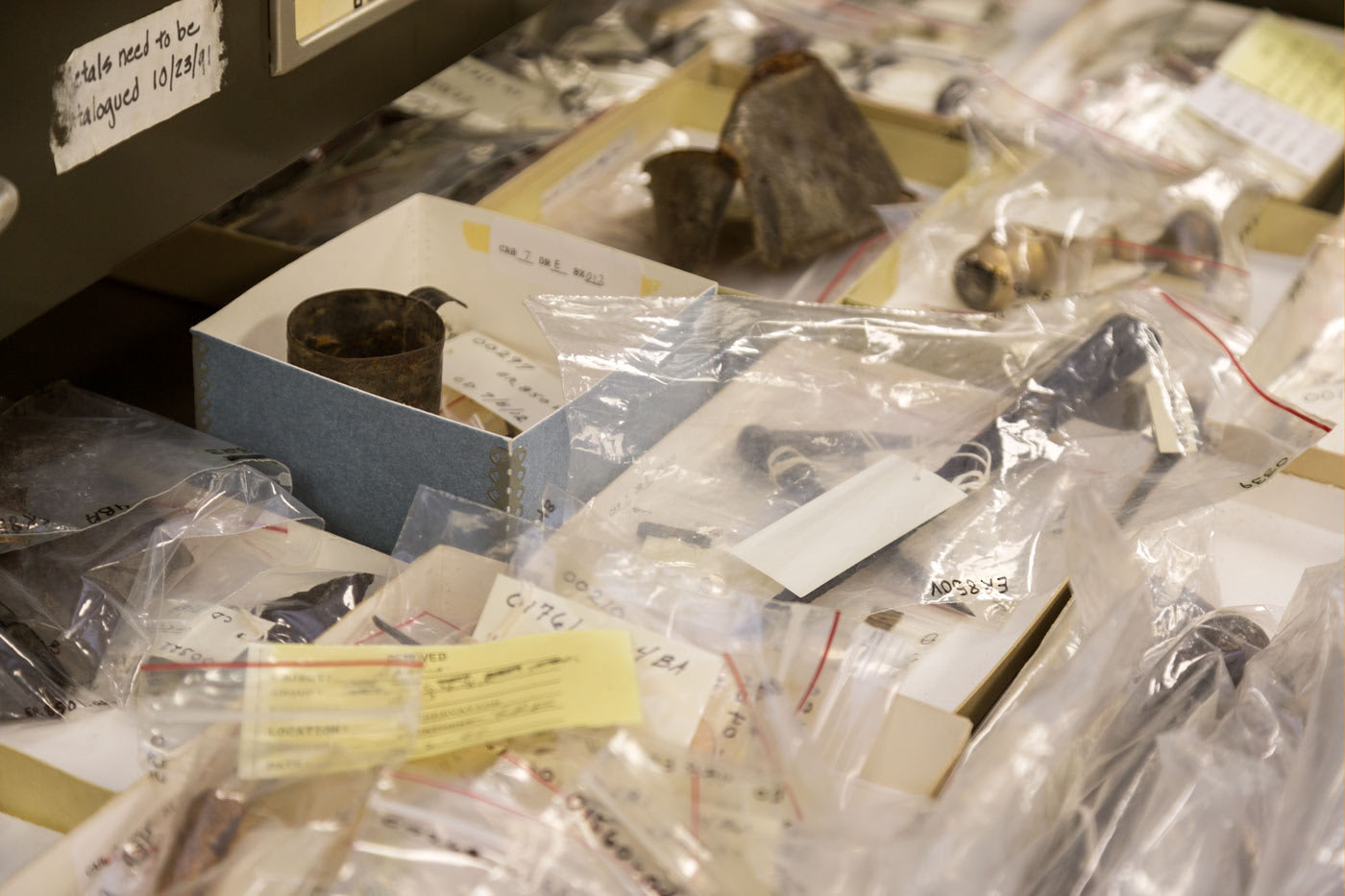Colonial Williamsburg’s Powder Magazine is one of the oldest surviving buildings in the Historic Area. Recently, two major research initiatives were launched to support the accurate restoration of the structure for the first time since its original restoration nearly 90 years ago. The initiatives focus on archaeological excavation of the area around the building and architectural research inside to help us better understand the Magazine’s colonial appearance and how we should design future interpretive programming.

The octagonal building was constructed in the middle of town in 1715 by Gov. Alexander Spotswood to house the arms and ammunition dispatched from London to defend the colony. After the Revolutionary War, the building served as a stable and as the Williamsburg Baptist Church before it was obtained and restored by Colonial Williamsburg in 1930. In 2021, archaeologists began an investigation at the rear of the Powder Magazine and discovered the Foundation’s current interpretation of the structure does not reflect several key details, including a clay tile roof and a different configuration of windows and openings.
In October, the team discovered part of the Powder Magazine’s original 1755 perimeter wall foundation, with its shallow position in the ground possibly indicating that the wall is not as tall as we recreated it. They also uncovered several smaller postholes that suggest there were other features along the perimeter, possibly the remains of a wooden fence that predated the brick wall.

Inside the Powder Magazine, Director of Architectural Preservation Matt Webster and his six-person team, aided by members of the Foundation’s maintenance department, have removed several pieces of plaster in the hopes of finding original material from the structure. They already found a significant number of materials still intact, which they will use to reconstruct the interior of the site.
When the interior research is complete, they will create a restoration plan and submit it for final review before construction can begin. Webster is confident the interior is going to look much different in its next iteration, since this is the first time the original masonry walls have been inspected in more than 80 years. Webster also works closely with Director of Archaeology Jack Gary and the archaeology team to interpret the interior of the site.

The final goal is to gather enough information to accurately interpret the space around and inside the building to reflect not just how the building looked, but also the activities that took place there in the 18th-century in time for the 250th anniversary of the Gunpowder Incident on April 21, 2025. Achieving our goal to update the interior and exterior of the Powder Magazine to more accurately reflect the structure during this exciting time in American history can only happen with support from generous donors.
Colonial Williamsburg is the largest living history museum in the world. Witness history brought to life on the charming streets of the colonial capital and explore our newly expanded and updated Art Museums of Colonial Williamsburg, featuring the nation’s premier folk art collection, plus the best in British and American fine and decorative arts from 1670–1840. Check out sales and special offers and our Official Colonial Williamsburg Hotels to plan your visit.